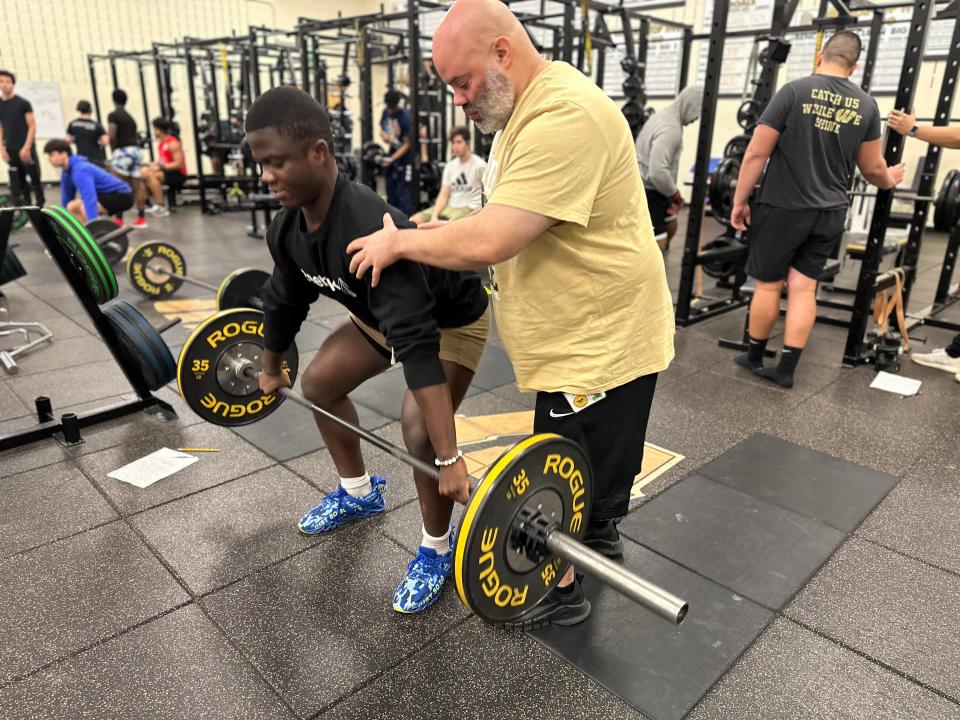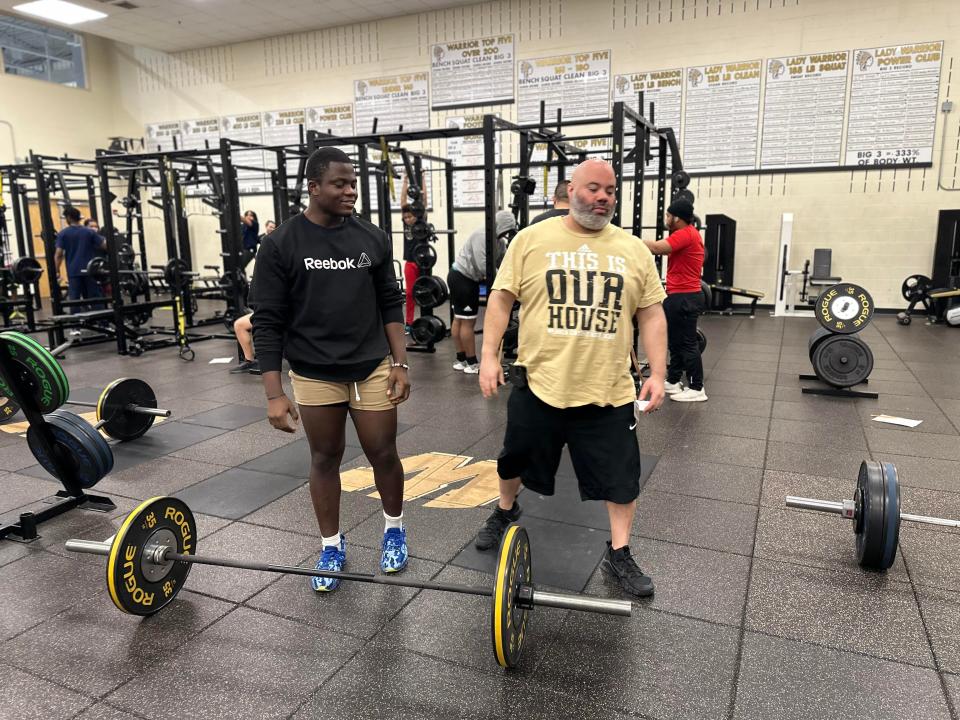ACL injury treatment, prevention has evolved over past decade
Editor's Note: The following is part of a class project originally initiated in the classroom of Ball State University professor Adam Kuban in fall 2021. Kuban continued the project this spring semester, challenging his students to find sustainability efforts in the Muncie area and pitch their ideas to Deanna Watson, editor of The Star Press, Journal & Courier and Pal-Item. This spring, stories related to health care will be featured.
Knee injuries are among the most common in high school basketball. The combination of cutting and jumping to the lack of development in the bodies of high school athletes make these injuries more prevalent. According to a 2013 study from “The Journal of Athletic Training,” by Allan M. Joseph, knee injuries make up 60 percent of high school sports-related injuries.

Trainers, physicians and strength-and-conditioning coaches have to come together to put athletes in the best situations to limit these injuries and have a quick recovery if they do happen. Technology and techniques have improved in the last decade, making for quicker recovery times and more knowledge on the subject.
Pike High School Athletic Trainer Paul Herman said that training for athletes to help limit these injuries starts as soon as they become freshmen. He said a lot of the training happens in weight-lifting classes and that it is important for them to start early because of how weak their hips and lower back are.
“We have a lot of weight-lifting classes, so a lot of things are done there,” Herman said. “Each player is a bit different. Normally, they are weak in the hips, so you want to start activating the hip muscles by having a band around their ankles and doing side-steps.”
According to a 2021 study from “The American Orthopedic Society For Sports Medicine” by Caroline Mouton, ACL injuries were most likely to occur in the first two months of the season compared to the rest of the year. According to the study, one-third of the knee injuries happened in the first two months, which correlates with athletes coming into the school year weaker.

Different coaches have varying programs to make sure players are ready come gameday. Jerry Clark, Warren Central High School strength-and-conditioning coach, uses a training method that involves varying the intensity and volume over the course of a training program.
“As a strength coach, my programming is grounded in two goals: injury prevention and an improvement in physical capabilities that increases athleticism,” Clark said. “As far as programming goes, I typically use undulating and non-linear periodization. Recently, I have been working to incorporate the conjugate method and making it fit traditional high school strength and conditioning.”
Undulation is a training approach that varies the intensity, volume and exercises on a daily or weekly basis. Non-linear periodization is a training approach that changes the training variables in a nonlinear fashion. For example, instead of gradually increasing the weight, reps or sets over time, non-linear periodization involves changing the training in a less-predictable manner. The conjugate method is a training approach that involves rotating exercises and varying the intensity of training to continuously challenge the body and prevent plateaus.
Clark also said that his program has been simplified as he has evolved as a strength coach and that there is more of a focus on soft tissue restoration on the injury prevention side.
According to a 2022 study by Carolyn A. Emery in the “Journal of Orthopedic & Sports Physical Therapy,” neuromuscular training warm-up program reduces ankle and knee injury rates by 36% in youth basketball. This focuses on performing exercises that train the nerves and muscles to react and communicate. Neuromuscular training programs are designed to both increase the strength of the knee joint and increase the individual's awareness of proper balance and technique.
Darla Baker, a physical therapist and knee specialist at Shelbourne Knee Center, said that there have been many different ways of trying to prevent these injuries, but there is only so much that can be done.
“I would say a lot of rehab and training facilities have looked at doing ACL-prevention programs which combine various modes of exercise such as plyometrics, neuromuscular training, and strength training,” Baker said. “Some early success was noted as they tried to work on jumping and landing techniques and making sure the hamstrings and quad strength was at a good ratio. Unfortunately, injuries have continued, and these prevention models have failed as some of the risk factors for ACL injury are not modifiable such as ACL notch size.”
Instead, the focus has been about the evolution of treatments and recovery. An example, Herman said, is that when these injuries occur, doctors used to be against movement until after surgery. Now, patients are walking on the day of surgery.
“ACL rehab has gotten a lot more sophisticated,” Herman said. “There are a lot more diagnostic things that we can do even in the athletic training room such as new tests that have been developed in the last 10 years. In rehab, there are a multitude of things that have gone through different protocols such as hip strengthening and quad strengthening.
Baker said that recovery time has changed drastically over the last decade and that players can return within three to four months post-operations compared to what it used to be at about six to nine months.
“Not a lot has changed in terms of ACL rehab,” Baker said. “We were the first to produce the accelerated rehab program, and we have just continued that. I would say our approach with patella realignment, knee arthroscopies and total knee replacements has evolved to get back quicker range of motion through a combination of bedrest, Cryo-cuff use, TED hose use and limited walking to control the swelling. If you control the swelling, the pain is better and allows for quicker return to full range of motion. As we do not go into the knee capsule itself, the knee doesn’t swell. With no swelling, we can get range of motion back quickly. Once range of motion is back, you can work on patella tendon regeneration with high-rep, low-weight-demand activities.”
A Cryo-cuff is a therapeutic device that is commonly used in sports medicine and rehabilitation to help reduce pain and swelling after an injury or surgery. A TED hose is a type of medical compression that is used to help prevent blood clots from forming in the legs for recovering athletes. These are a few of the many approaches to recovery in high school basketball players.
This article originally appeared on Muncie Star Press: ACL injury treatment, prevention has evolved over past decade

